Scaling the Heights: A Guide to China's Most Famous Mountains 🏔️🇨🇳
Embark on a breathtaking journey through China’s most iconic mountains, exploring their cultural significance, natural beauty, and the best ways to experience these majestic peaks.
Reaching for the Heavens: China’s Majestic Mountains
Welcome, nature enthusiasts and culture seekers! Prepare to be awestruck by the towering peaks and misty landscapes that have inspired Chinese art, literature, and spirituality for millennia. From the ethereal beauty of Huangshan to the sacred heights of Mount Tai and the heart-pounding trails of Hua Shan, this guide will take you on a journey through China’s most famous mountains, each with its own unique character and allure. Let’s explore the heights that have captivated imaginations and challenged adventurers for generations.
Mountains in Chinese Culture 📜

In Chinese culture, mountains are more than just geographical features; they are spiritual entities, believed to be the dwelling places of immortals and deities. They have been revered as sacred sites, inspiring countless poems, paintings, and philosophical musings throughout history. The concept of “shan shui” (mountain and water) is central to Chinese landscape aesthetics, representing the harmony between humans and nature.
💡 Cultural Insight: The Five Great Mountains of China (五岳, Wǔyuè) have been important ceremonial centers for over 2,000 years, with emperors making pilgrimages to pay homage to the heavens and earth.
Your Mountain Adventure Itinerary 🗺️
1. Mount Tai (泰山, Tài Shān): The Most Revered
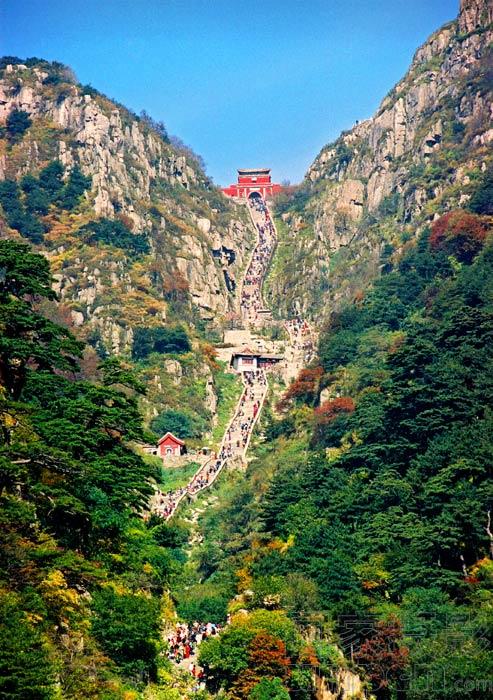
Located in Shandong Province, Mount Tai is considered the most sacred of the Five Great Mountains of China.
Why Visit:
- Witness the awe-inspiring “Sunrise from the East” at the summit
- Explore ancient temples and inscriptions dating back thousands of years
- Experience the spiritual significance that has drawn pilgrims for millennia
How to Reach:
- Take a high-speed train to Taishan station from major cities like Beijing or Shanghai
- From train station, take a bus or taxi to the mountain base
Best Time to Visit: April to October for the best weather conditions
💡 Hiking Tip: While you can hike to the summit, many visitors choose to take the cable car up and hike down to enjoy the scenery at a leisurely pace.
2. Huangshan (黄山, Huáng Shān): The Yellow Mountain
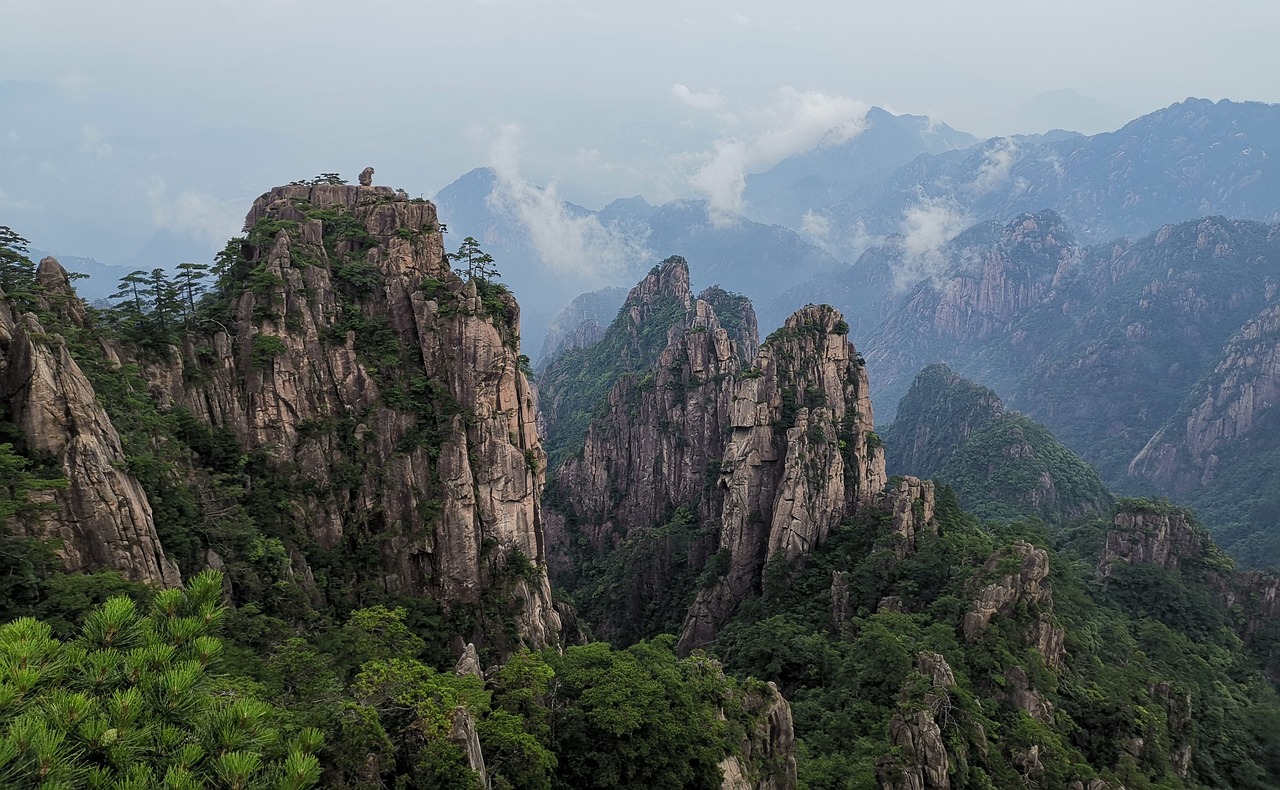
Next, head to Anhui Province to experience the ethereal beauty of Huangshan, famed for its “four wonders”: peculiarly-shaped pines, bizarre rock formations, the sea of clouds, and hot springs.
Why Visit:
- Marvel at the iconic twisted pine trees clinging to sheer cliffs
- Witness the mesmerizing “sea of clouds” phenomenon
- Soak in the rejuvenating hot springs at the mountain’s base
How to Reach:
- Fly to Huangshan Tunxi International Airport
- Take a bus from the airport to Tangkou Town, then another bus to the mountain scenic area
Best Time to Visit: September to October for clear skies and comfortable temperatures
3. Hua Shan (华山, Huà Shān): The Most Precipitous
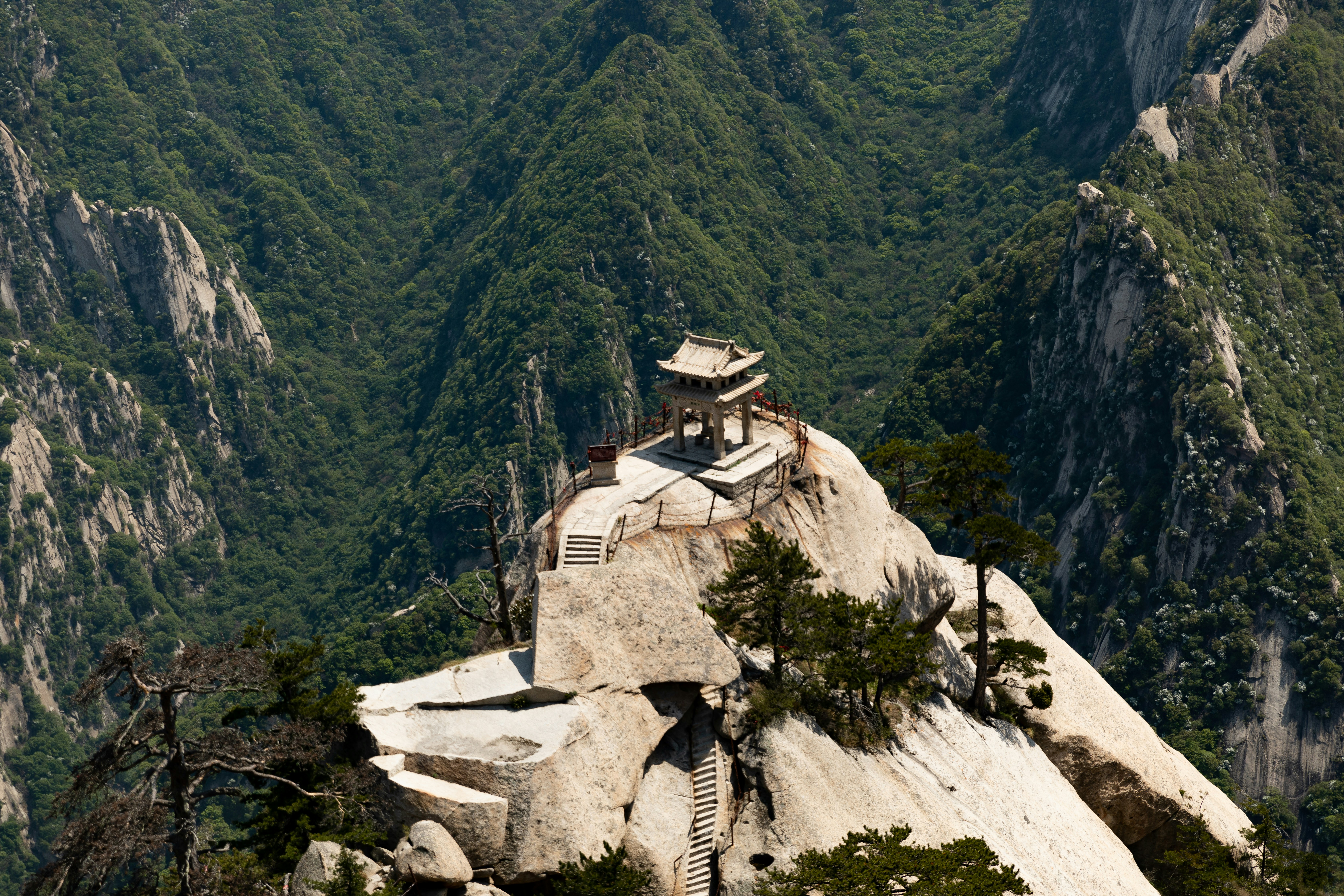
Located in Shaanxi Province, Hua Shan is known as “The Most Precipitous Mountain under Heaven” and is famous for its steep cliffs and narrow pathways.
Why Visit:
- Experience the adrenaline rush of the world-famous plank walk on the South Peak
- Witness breathtaking sunrise views from the East Peak
- Explore Taoist temples and witness the harmonious blend of nature and spirituality
How to Reach:
- Take a high-speed train to Huashan North Station from Xi’an
- From the station, take a shuttle bus to the mountain base
Best Time to Visit: March to November, avoiding the cold winter months
💡 Safety Tip: While the plank walk is a popular attraction, it’s not for the faint of heart. Always follow safety guidelines and consider your physical condition before attempting.
4. Zhangjiajie (张家界, Zhāngjiājié): Avatar Mountains
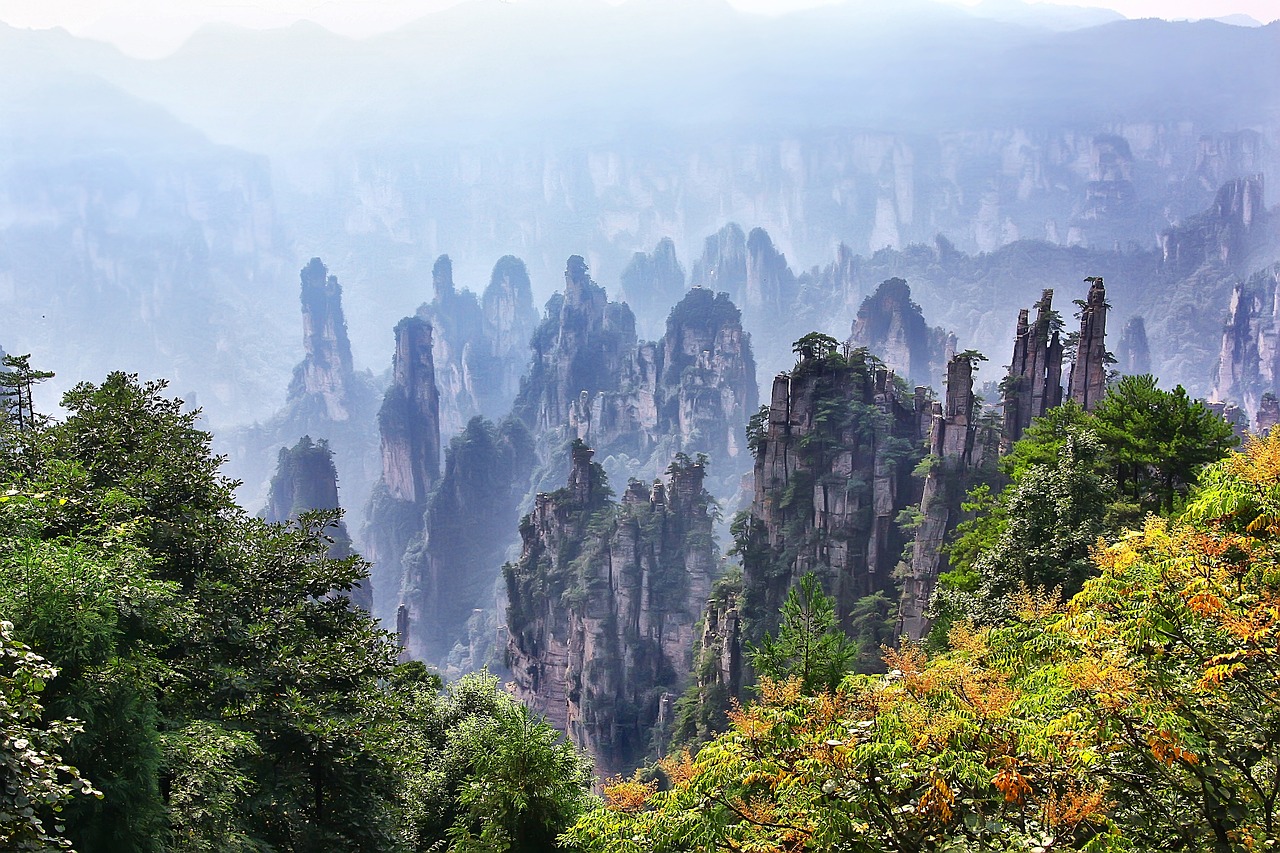
Located in Hunan Province, Zhangjiajie is famous for its towering sandstone pillars that inspired the floating mountains in the movie “Avatar.”
Why Visit:
- Walk on the glass-bottomed skywalk for heart-stopping views
- Take the world’s longest cable car ride to Tianmen Mountain
- Explore the lush forests and diverse wildlife in the national park
How to Reach:
- Fly directly to Zhangjiajie Hehua International Airport
- Take a bus from the airport to Wulingyuan Scenic Area
Best Time to Visit: April to October, avoiding the rainy season in July and August
💡 Photography Tip: The best views are often early in the morning when the mist swirls around the peaks. Bring a good zoom lens!
5. Emei Shan (峨嵋山, Éméi Shān): Buddhist Sacred Mountain
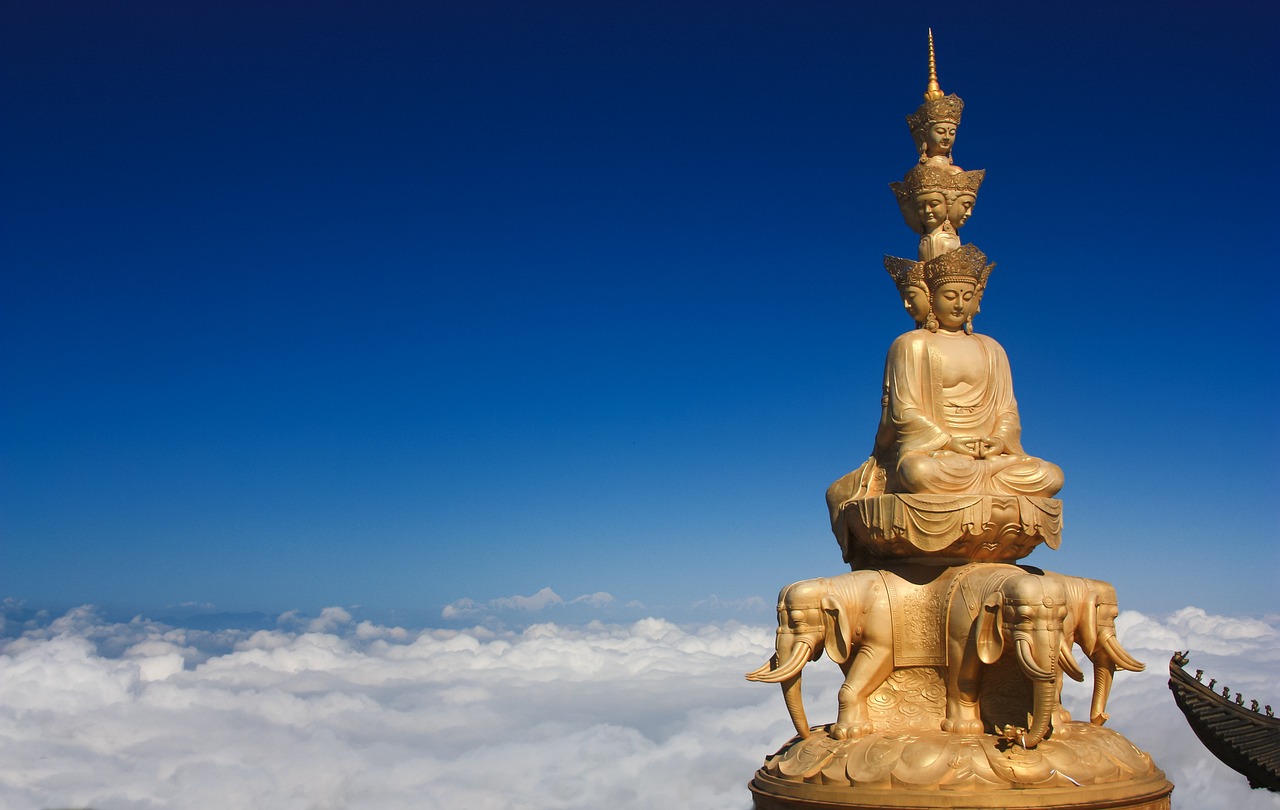
Emei Shan in Sichuan Province is one of the Four Sacred Buddhist Mountains of China, known for its lush vegetation and ancient monasteries.
Why Visit:
- Explore numerous Buddhist temples and monasteries
- Witness the spectacular “Buddha’s Light” phenomenon
- Encounter the playful Tibetan macaques that inhabit the mountain
How to Reach:
- Take a high-speed train to Emeishan City from Chengdu
- From Emeishan City, take a bus to the mountain base
Best Time to Visit: March to November, avoiding the crowded summer months
6. Mount Lu (庐山, Lú Shān): Picturesque Cultural Landmark
Finish your mountain journey at Mount Lu in Jiangxi Province, a UNESCO World Heritage Site renowned for its natural beauty and cultural significance.
Why Visit:
- Admire the stunning cloud and mist effects known as the “Mount Lu Cloud and Mist”
- Visit the White Deer Cave Academy, one of ancient China’s most prestigious academies
- Explore the unique villa architecture from different historical periods
How to Reach:
- Take a train to Jiujiang city, then a bus to the Mount Lu scenic area
- Alternatively, fly to Lushan Airport and take a short bus ride to the mountain
Best Time to Visit: April to October for the best views of clouds and mists
Mountain Explorer’s Guide 🧗♂️
- Prepare for Altitude: Some peaks are quite high; allow time to acclimatize.
- Respect Nature: Stick to designated paths and take your trash with you.
- Dress Appropriately: Weather can change quickly; bring layers and rain gear.
- Stay Hydrated: Carry plenty of water, especially for longer hikes.
- Respect Local Customs: Many mountains are sacred sites; behave respectfully.
📝 Final Tips for Mountain Adventurers
- Learn Key Phrases 🗣️: “Shān” (山) means “mountain,” and “Dǐng” (顶) means “peak.”
- Timing is Everything 🕒: Avoid Chinese national holidays when mountains can be extremely crowded.
- Capture the Moment 📸: Early mornings and late afternoons offer the best light for photography.
- Take It Slow 🐢: Many of these mountains have thousands of steps; pace yourself and enjoy the journey.
Embarking on a tour of China’s famous mountains is not just about conquering peaks; it’s about immersing yourself in landscapes that have shaped Chinese culture for millennia. From the sacred heights of Mount Tai to the otherworldly pillars of Zhangjiajie, each mountain offers a unique blend of natural wonder and cultural significance. So lace up your hiking boots, charge your camera, and prepare for an adventure that will lift your spirits as high as the peaks themselves!
Happy (and safe) climbing! 🏔️🥾